12.1: The Structure of DNA
- Page ID
- 165330
A quick look at the whole structure of DNA
DNA is a complex molecule which carries the genetic code. The diagram below shows a tiny bit of a DNA double helix.
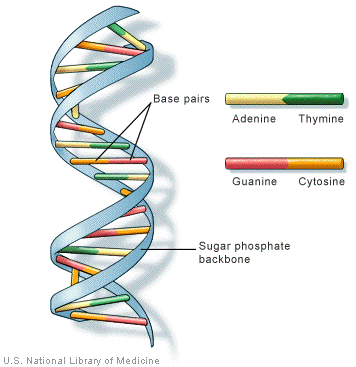
Figure 12.1.1: The double helical structure of DNA
The backbone of DNA is based on a repeated pattern of a sugar group and a phosphate group. The full name of DNA, deoxyribonucleic acid, because of the presence of sugar - deoxyribose. Deoxyribose is a modified form of another sugar called ribose. Ribose is the sugar in the backbone of RNA, ribonucleic acid.

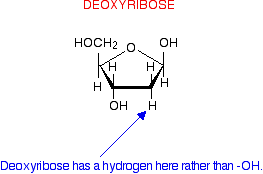
The carbon atom to the right of the oxygen as we have drawn the ring is given the number 1, and then you work around to the carbon on the CH2OH side group which is number 5.

Attaching a phosphate group
The other repeating part of the DNA backbone is a phosphate group. A phosphate group is attached to the sugar molecule in place of the -OH group on the 5' carbon.
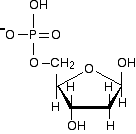
Attaching a base and making a nucleotide
In DNA, these bases are cytosine (C), thymine (T), adenine (A) and guanine (G).These bases attach in place of the -OH group on the 1' carbon atom in the sugar ring.
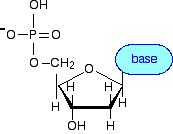
What we have produced is known as a nucleotide. We now need a quick look at the four bases.
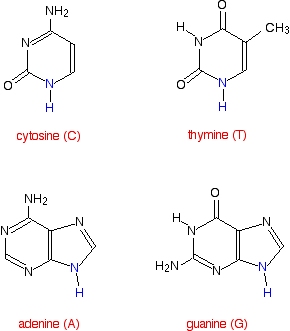
The nitrogen and hydrogen atoms shown in blue on each molecule show where these molecules join on to the deoxyribose. In each case, the hydrogen is lost together with the -OH group on the 1' carbon atom of the sugar. This is a condensation reaction - two molecules joining together with the loss of a small one (not necessarily water).
For example, here is what the nucleotide containing cytosine would look like:

Joining the nucleotides into a DNA strand
A DNA strand is simply a string of nucleotides joined together. The phosphate group on one nucleotide links to the 3' carbon atom on the sugar of another one. In the process, a molecule of water is lost - another condensation reaction.

Building a DNA chain concentrating on the essentials
What matters in DNA is the sequence the four bases take up in the chain. We aren't particularly interested in the backbone, so we can simplify that down. For the moment, we can simplify the precise structures of the bases as well. We can build the chain based on this fairly obvious simplification:
The diagram below is a bit from the middle of a chain. Notice that the individual bases have been identified by the first letters of the base names. (A = adenine, etc). Notice also that there are two different sizes of base. Adenine and guanine are bigger because they both have two rings. Cytosine and thymine only have one ring each.
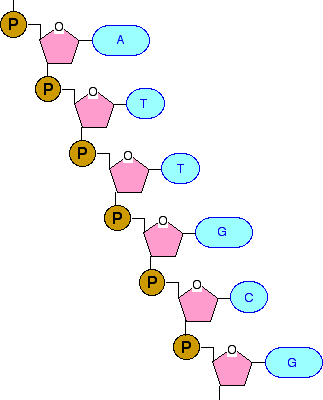
Joining the two DNA chains together
If you look at this carefully, you will see that an adenine on one chain is always paired with a thymine on the second chain. And a guanine on one chain is always paired with a cytosine on the other one.
So how exactly does this work?
The first thing to notice is that a smaller base is always paired with a bigger one. The effect of this is to keep the two chains at a fixed distance from each other all the way along.
But, more than this, the pairing has to be exactly . . .
-
adenine (A) pairs with thymine (T);
-
guanine (G) pairs with cytosine (C).
That is because these particular pairs fit exactly to form very effective hydrogen bonds with each other. It is these hydrogen bonds which hold the two chains together.
The base pairs fit together as follows.
The A-T base pair:
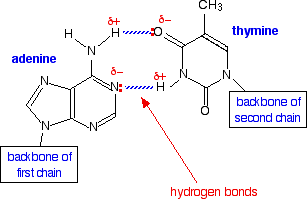
The G-C base pair:
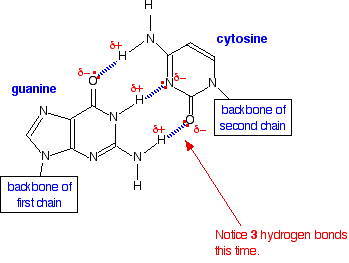
A final structure for DNA showing the important bits
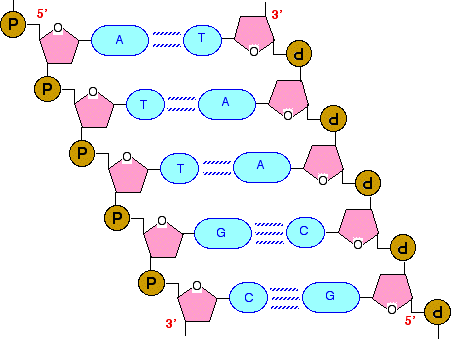
Notice that the two chains run in opposite directions, and the right-hand chain is essentially upside-down with 3' and 5'.
If you followed the left-hand chain to its very end at the top, you would have a phosphate group attached to the 5' carbon in the deoxyribose ring. If you followed it all the way to the other end, you would have an -OH group attached to the 3' carbon.
In the second chain, the top end has a 3' carbon, and the bottom end a 5'. This 5' and 3' notation becomes important when we start talking about the genetic code and genes. The genetic code in genes is always written in the 5' to 3' direction along a chain.
Contributors
Jim Clark (Chemguide.co.uk)


